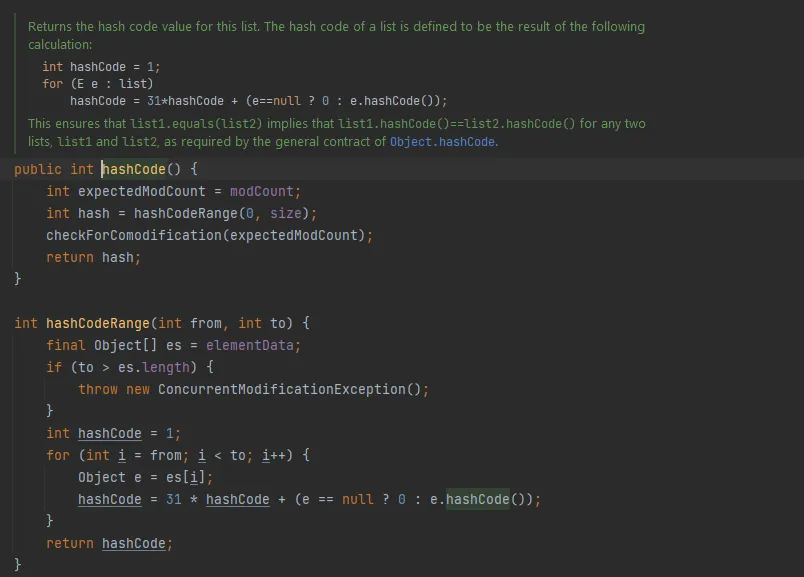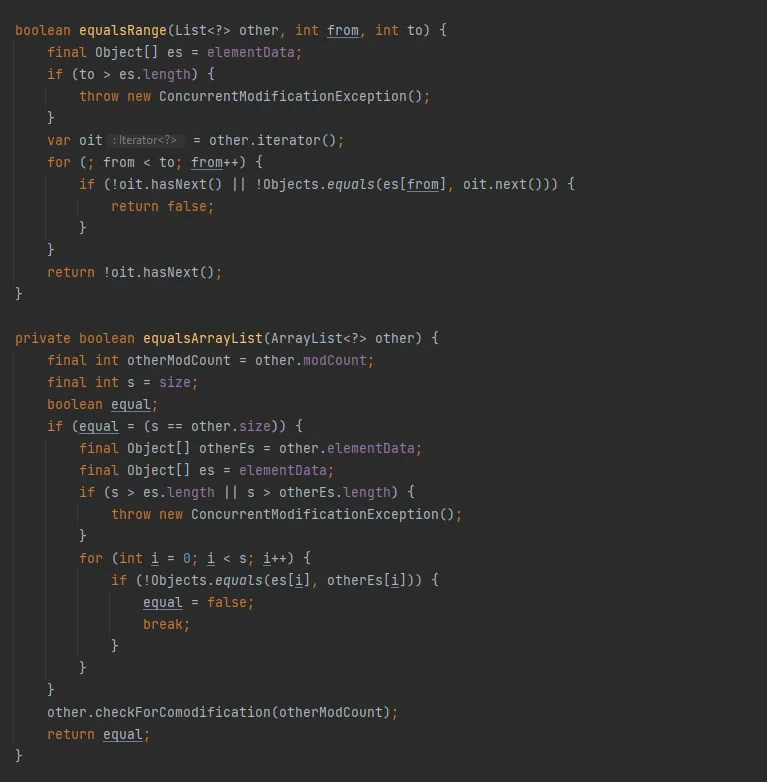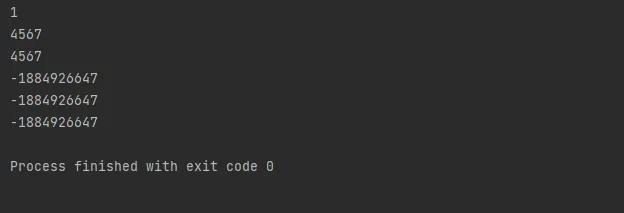在 HashMap 中,当我将对象列表作为键传递时,我会得到不同的结果。
List<NewClass> list1 = new ArrayList<>();
List<NewClass> list2 = new ArrayList<>();
NewClass obj1 = new NewClass(1, "ddd", "eee@gmail.com");
NewClass obj2 = new NewClass(2, "ccc", "kkk@gmail.com");
list1.add(obj1);
list1.add(obj2);
list2.add(obj1);
list2.add(obj2);
Map<List<NewClass>, Integer> mapClass = new HashMap<>();
mapClass.put(list1, 1234);
mapClass.put(list2, 4567);
System.out.println(mapClass.size());
System.out.println(mapClass.get(list1));
NewClass obj4 = new NewClass(1, "ddd", "eee@gmail.com");
NewClass obj5 = new NewClass(2, "ccc", "kkk@gmail.com");
List<NewClass> list3 = new ArrayList<>();
list3.add(obj4);
list3.add(obj5);
System.out.println(mapClass.get(list3));
System.out.println(list1.hashCode());
System.out.println(list2.hashCode());
System.out.println(list3.hashCode());
以下是我看到的输出
hashCode() called - Computed hash: -1704251796
hashCode() called - Computed hash: -587009612
hashCode() called - Computed hash: -1704251796
hashCode() called - Computed hash: -587009612
1
hashCode() called - Computed hash: -1704251796
hashCode() called - Computed hash: -587009612
4567
hashCode() called - Computed hash: -1704251796
hashCode() called - Computed hash: -587009612
**null**
hashCode() called - Computed hash: -1704251796
hashCode() called - Computed hash: -587009612
-1879206775
hashCode() called - Computed hash: -1704251796
hashCode() called - Computed hash: -587009612
-1879206775
hashCode() called - Computed hash: -1704251796
hashCode() called - Computed hash: -587009612
-1879206775
尽管三个列表的哈希码相同,但mapClass.get(list3)返回null,而list3具有与list1/list2相同的对象。这种行为是为什么?




NewClass是否有适当的equals实现?这是必需的。 - luk2302